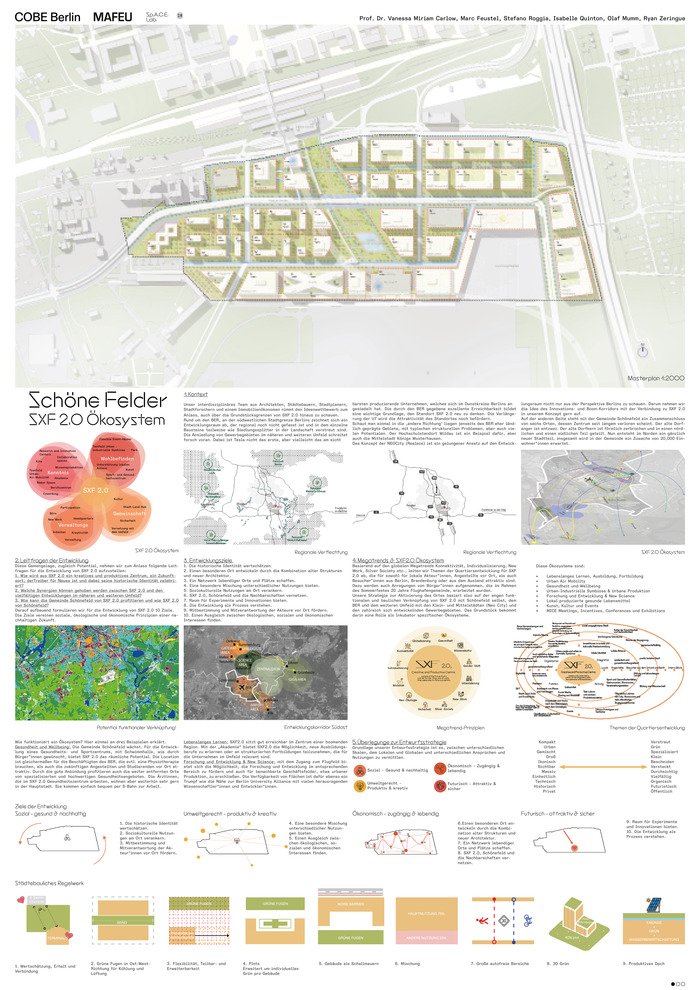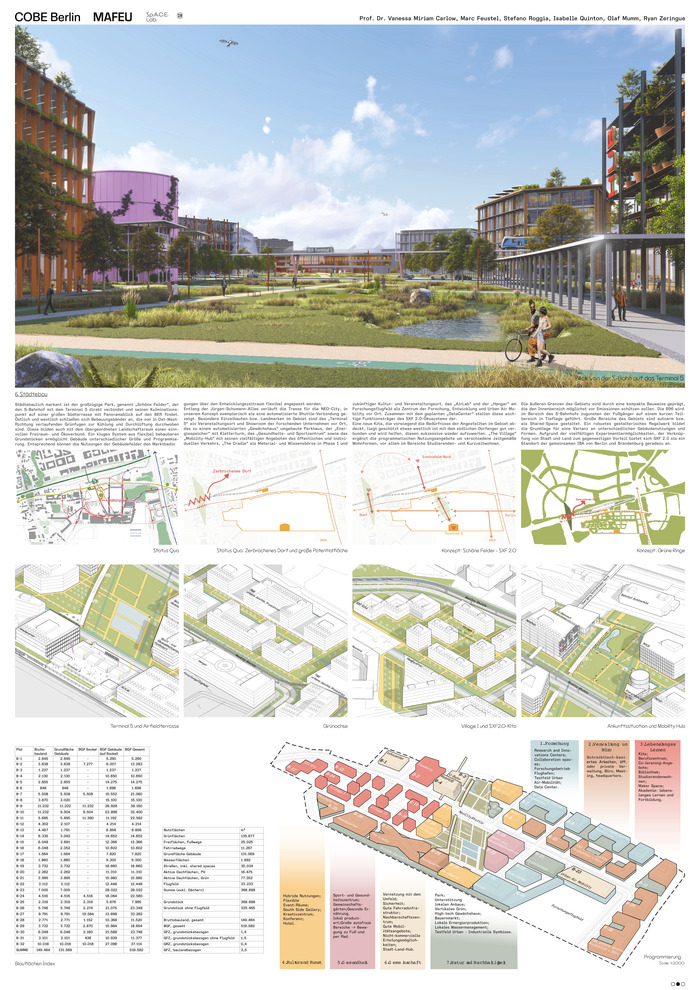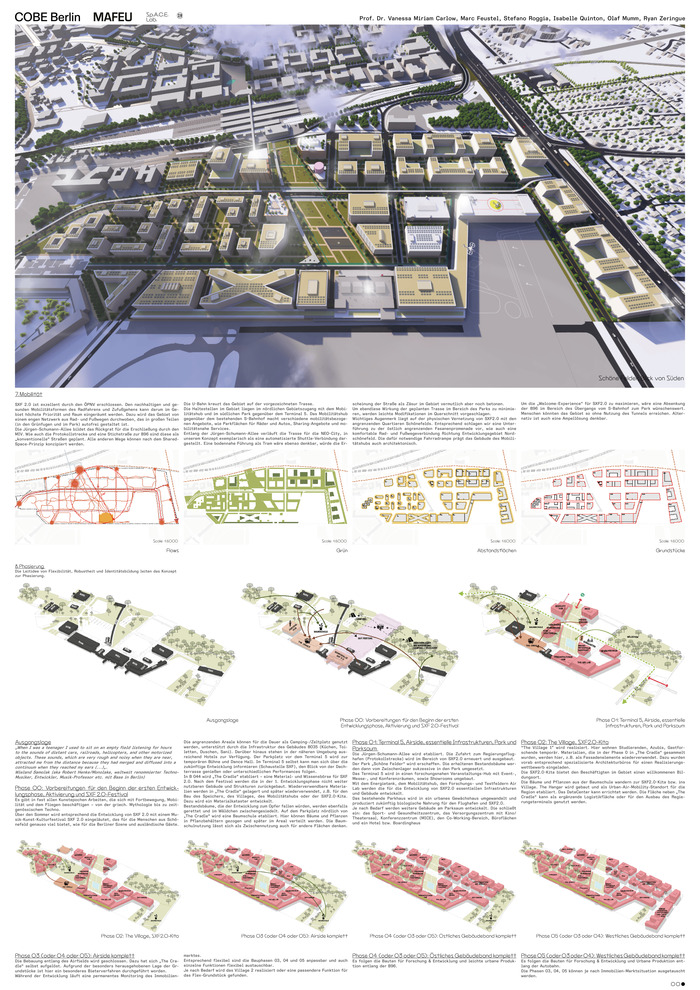Schöne Felder
SXF 2.0 Ecosystem
Prof. Dr. Vanessa Miriam Carlow, Marc Feustel, Stefano Roggia, Isabelle Quinton, Olaf Mumm, Ryan Zeringue
Our interdisciplinary team of architects, urban designers, urban planners, urban researchers and a property economist are using the ideas competition as an opportunity to look beyond the boundaries of SXF 2.0.
Around BER, on Berlin's south-western city limits, a development area is emerging that is not yet regionally defined and in which individual building blocks are sometimes scattered like settlement fragments in the landscape. The establishment of industrial estates in the immediate and wider surroundings is progressing rapidly. The excellent accessibility provided by BER forms an important basis for rethinking the SXF 2.0 location. The extension of the U7 underground line will make the location even more attractive. An entirely new neighbourhood is being created, with an expected increase of 20,000 inhabitants in the municipality.
Key questions, which objectives are to combine social, ecological and economic principles for a sustainable future, and development goals are defined initially for the draft. Based on the global megatrends of connectivity, individualisation, new work, silver society, etc., neighbourhood development themes are derived for SXF 2.0 that are attractive for local stakeholders, local employees and visitors from Berlin, Brandenburg and abroad. Suggestions from citizens that were developed as part of the summer festival celebrating 20 years of the airport community are incorporated as well.
The strategy for activating the site is therefore based on the close functional and structural link between SXF 2.0 and Schönefeld itself, BER and the wider surrounding area with the small and medium-sized towns (Neo City) and the numerous developing business parks. The site will play a role as an incubator for specific ecosystems.
Mobility and accessibility within the neighbourhood are playing an overriding role of the proposal, since SXF 2.0 is excellently served by public transport. Sustainable and healthy forms of mobility such as cycling and walking can therefore be given the highest priority and space in the area.
The guiding principles of flexibility, robustness and identity formation guide the concept of phasing the development.
For the development of SXF2.0, we propose seven essential functional groups that are mutually dependent and cannot be sharply delineated from one another in the sense of the SXF2.0 ecosystem. From innovative research and development, to vibrant culture and arts, to the fundamental pillars of health and governance, each aspect contributes to a sustainable and adaptable community. These functions are interconnected, creating a cohesive and robust ecosystem - a blueprint for a vibrant and resilient future.
In order to ensure the economic feasibility of the new neighbourhood, the development of the central areas around the central green spaces 'Schöne Felder' is planned.


